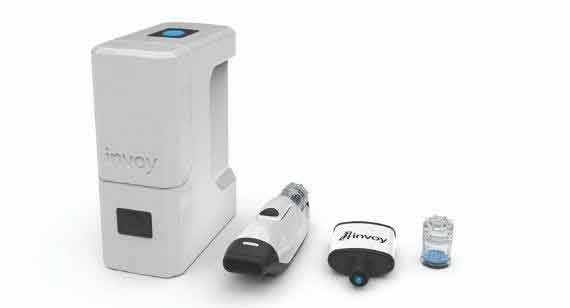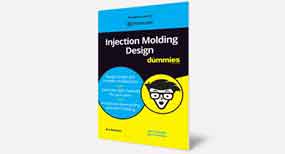Enhance Parts with Insert Molding, Overmolding
When designing an injection-molded plastic part, you may find you want to enhance it a bit. Maybe add greater functionality to the part. Or improve its appearance. Or make it a stronger, more durable part.
You can do all of these things by using insert molding or overmolding, two processes that our customers at China Metal Parts really seem to appreciate. So, what’s the difference? This post shows you.
Overmolding Adds Function, Improves Appearance
Overmolding allows an additional layer of resin to be added to an existing molded part to provide a combination of characteristics no single material can provide. A common application is to add a soft, functional, hand-friendly layer of rubber-like material, typically a thermoplastic elastomer (TPE), over a hard substrate. This can improve the grip of a hand-held item. Another application is to change or enhance the appearance of a part by overmolding material of a different color or finish. Think medical devices, hand tools, toothbrushes, even oven knobs, as examples.
Overmolding has two primary methods: two-shot molding and pick-n-place molding. The former uses a single production mold while the latter uses two molds. At China Metal Parts, we follow the two-step or two-shot process. First, we mold the substrate part. Then we place the substrate part into the mold and a second material is injected to form the final, two-material part.
The role of bonding is a key one in overmolding. Bonding between resin layers helps keep the layers from separating. Depending on the part geometry, bonds can be subjected to several forces that can pull the layers apart. These include: direct tensile pull, which can cause separation at a butt joint; shearing caused by a pull parallel to the bonded interface that can cause separation at a lap joint; and peeling, which typically begins at an edge.
Layers bond in two primary ways. One is actual chemical bonding at the interface of the two resin layers. The other is mechanical bonding, which depends on the physical geometry at the interface. Acceptable bonding is achieved through a combination of part design, predominant bond type, material selection, mold design, and molding process.
Finally, on overmolding, a word about material selection. As you would expect, materials are pivotal in overmolding. Indeed, thousands of possible combinations exist of substrate and overmolded material. You can review some of the more common possibilities of substrate material in a table on material bonding in our overmolding and insert molding design guidelines.
Insert Molding Builds Strength
The insert molding process can add strength and durability to parts. Think of it this way. While plastic injection-molded parts are fairly tough and strong and able to withstand heavy loads, sometimes plastic needs a little help. Examples? The bore in an all-plastic pulley will quickly wear. Tapped holes in molded handles and knobs are prone to stripping. But by bolstering these areas with metal—for instance, a stainless steel threaded insert, or a metal bearing—a best-of-both-worlds solution is achieved. That’s insert molding.
With insert molding, instead of doing assembly after the fact, many sizes and types of metal inserts can be placed directly into the mold before plastic injection. This eliminates secondary operations and provides robust mating of metal and plastic.
Additionally, insert molding shares some similarities with overmolding. Both methods incorporate disparate materials into the same part, which improves its properties. Both processes will drive up the cost of molded parts slightly, but this price difference is typically offset by the elimination of manual post-molding operations.
Also, where overmolding is a two-step process, insert molding is, as an industry saying goes, “done in one.” The pre-fabricated threaded insert, bushing, bold, sleeve, or boss is manually placed into the mold, the mold closes, plastic flows, the mold opens, and the part is ejected. The result is improved part strength and reliability.
For More Information: Injection Molding Design Book
For more detailed information on all of the above, plus other considerations for injection molding design, order a free copy of Injection Molding Design for Dummies.

